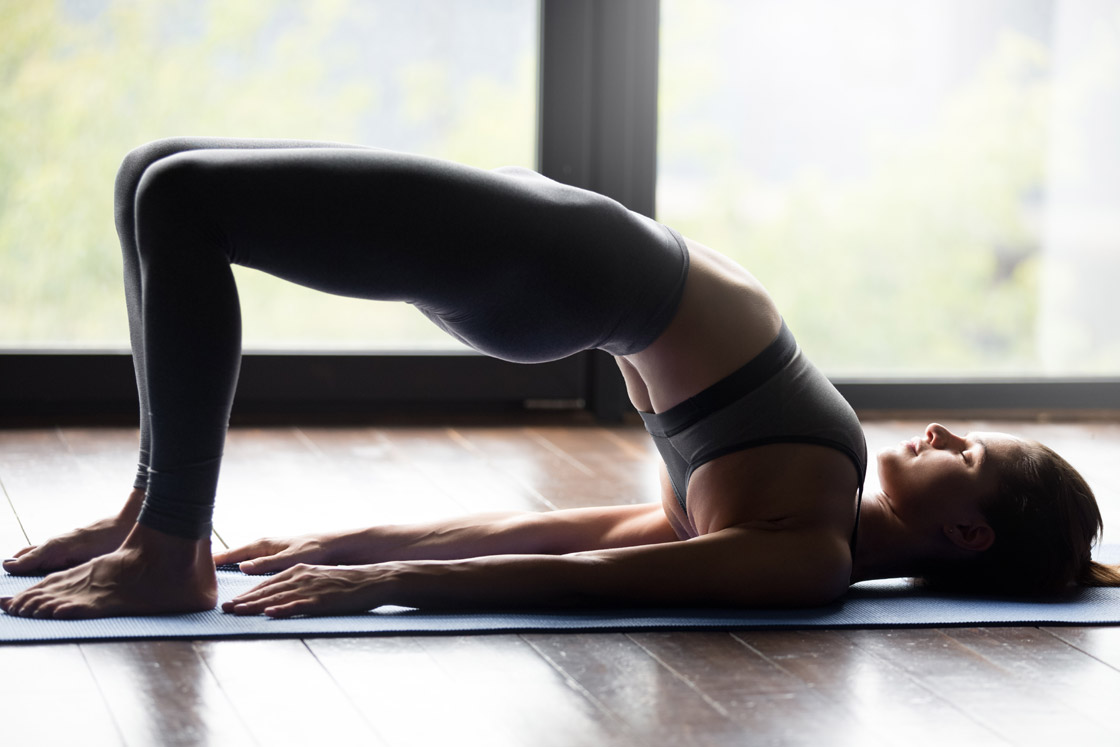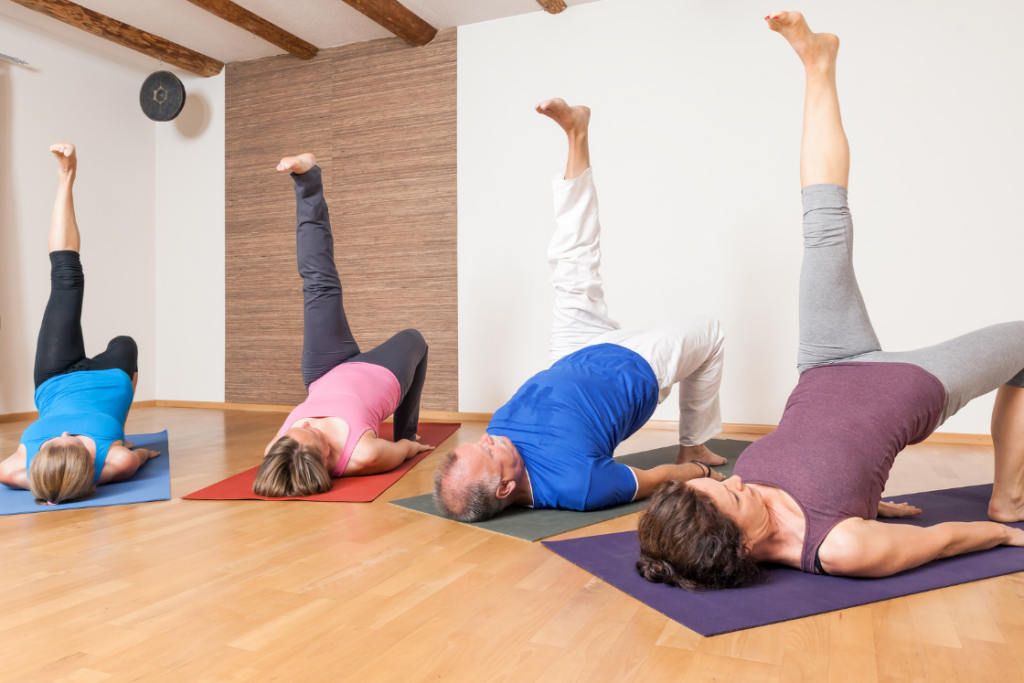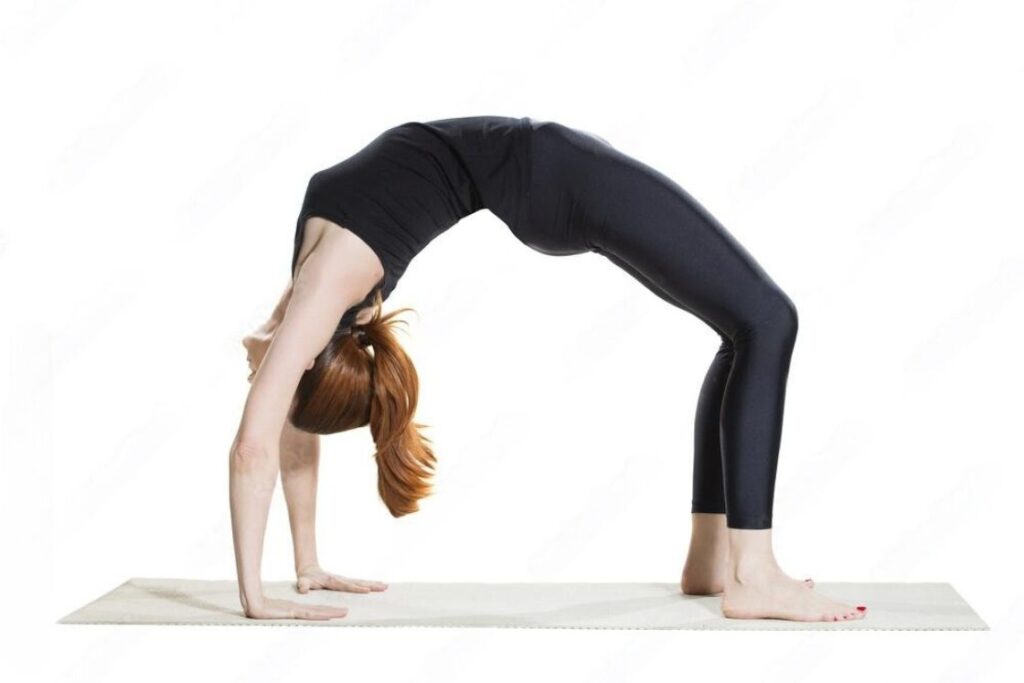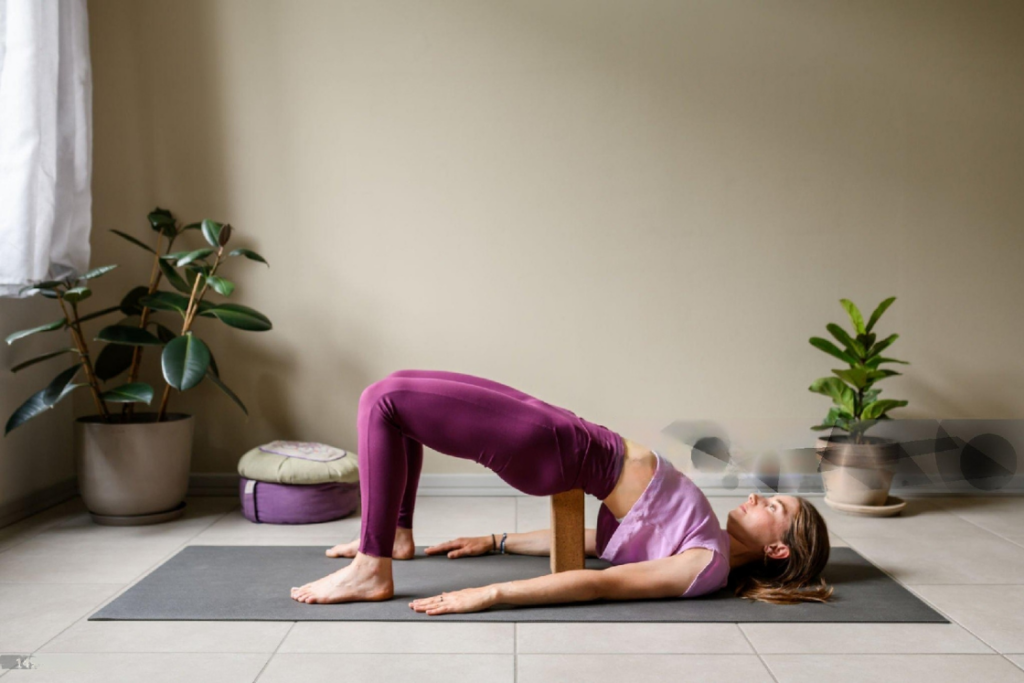Bridge Pose (Setu Bandhasana): How to Do, Benefits and Variations
Sanskrit Pronunciation Setu Bandhasana (SAY-too BAHN-dhah-suh-nuh) Meaning Setu = Bridge / Bandha = Lock / Asana = Pose Pose Type Backbend, supine Pose Level Beginner to Intermediate Anatomy Spine, chest, neck, back, hips, thighs Other Names Bridge Pose, Setu...

Bridge Pose (Setu Bandhasana): How to Do, Benefits and Variations

| Sanskrit Pronunciation | Setu Bandhasana (SAY-too BAHN-dhah-suh-nuh) |
| Meaning | Setu = Bridge / Bandha = Lock / Asana = Pose |
| Pose Type | Backbend, supine |
| Pose Level | Beginner to Intermediate |
| Anatomy | Spine, chest, neck, back, hips, thighs |
| Other Names | Bridge Pose, Setu Bandhasana, Setu Bandha Sarvangasana |
Bridge Pose, or Setu Bandhasana, is a highly effective yoga posture that enhances flexibility and strength. This reclined backbend and chest-opening pose involves lifting your hips while lying on your back, forming a bridge-like shape with your body. It stretches the chest and shoulders while strengthening the back, glutes, and thighs, making it an essential addition to any yoga practice.
Bridge Pose is particularly beneficial for counteracting the effects of prolonged sitting. It helps improve posture, alleviate low back pain, and stimulate abdominal organs. Whether you’re aiming to relieve discomfort from a sedentary lifestyle or seeking a full-body stretch, this pose offers a range of benefits that promote overall physical health and well-being.
Meaning & symbolism
Bridge Pose, or Setu Bandhasana, derives its name from the bridge-like shape your body forms while in the pose. In Sanskrit, “Setu” means bridge, and “Bandha” translates to a lock or bond, making Setu Bandhasana mean “the pose that creates a bridge.”
Symbolically, Bridge Pose represents the connection between different parts of the body and the integration of mind, body, and spirit. Much like a physical bridge connects two points, this pose bridges the gap between stability and flexibility, strength and relaxation. It serves as a metaphor for overcoming obstacles and connecting with a deeper sense of inner strength and balance.
How to do bridge pose(steps)

Follow-up pose
Knees-to-Chest Pose (Apanasana) Supine Spinal Twist (Supta Matsyendrasana) Legs-Up-the-Wall Pose (Viparita Karani)Variations of bridge pose
One-Legged Bridge Pose: Lift one leg off the floor while in Bridge Pose, keeping it extended straight up. This variation challenges balance and engages the core and glutes more deeply. Image source: shutterstockWheel Pose (Urdhva Dhanurasana): Transition from Bridge Pose to Wheel Pose by pressing your hands and feet into the floor, lifting your entire body into an arch. This advanced variation increases the intensity and extends the stretch.
Image source: shutterstockWheel Pose (Urdhva Dhanurasana): Transition from Bridge Pose to Wheel Pose by pressing your hands and feet into the floor, lifting your entire body into an arch. This advanced variation increases the intensity and extends the stretch.
 Image source: shutterstockSupported Bridge Pose: Place a yoga block or bolster under your sacrum for support. This variation helps relax the lower back and provides a restorative option.
Image source: shutterstockSupported Bridge Pose: Place a yoga block or bolster under your sacrum for support. This variation helps relax the lower back and provides a restorative option.
 Image source: shutterstockBridge Pose with Feet Together: Bring your feet together and press them into the floor. This variation can help strengthen the inner thighs and improve alignment.
Image source: shutterstockBridge Pose with Feet Together: Bring your feet together and press them into the floor. This variation can help strengthen the inner thighs and improve alignment.
Precautions
Don’t overarch your lower back. Use your core and glutes to support your spine and avoid back strain. Keep your knees aligned with your feet. Use a block between your knees if needed to stay aligned. Keep your head and neck relaxed and on the mat. Don’t turn your head or put pressure on your neck. If lifting your hips is hard, use a yoga block or bolster under your sacrum for support. If you feel any pain or discomfort, come out of the pose. Don’t push yourself into a position that feels strained.Contradictions
Don’t do this pose if you have severe neck pain or injuries, as it can make them worse. Be careful or avoid this pose if you have shoulder injuries, because it puts weight on your shoulders. Check with a doctor before doing this pose if you have serious spinal issues like a herniated disc. Pregnant people, especially later in pregnancy, should avoid or modify this pose since lying on your back can affect blood flow. Skip this pose if you’ve had recent abdominal or back surgery until your doctor says it’s okay. If you have high blood pressure that isn’t controlled, be careful, as lifting your legs might raise your blood pressure.Benefits of bridge pose (setu bandhasana)
Bridge Pose (Setu Bandhasana) strengthens and tones the body while enhancing flexibility and overall well-being. It improves posture, boosts energy, and alleviates stress. This pose supports spinal health and promotes mental calmness.
Strengthens the Spine and Core: Bridge Pose effectively engages and strengthens the muscles along the spine and in the core. By lifting the hips and back, it supports spinal alignment and enhances core stability, which is crucial for overall body strength. Stretches the Chest and Neck: This pose provides a gentle stretch to the chest, neck, and shoulders. The opening of these areas helps relieve tension and improve posture, which can alleviate discomfort from prolonged sitting or poor posture. Improves Flexibility: Regular practice of Bridge Pose enhances flexibility in the spine, hips, and thighs. Increased flexibility in these areas contributes to a greater range of motion and ease in performing other yoga postures. Stimulates Abdominal Organs: The compression of the abdomen during Bridge Pose massages internal organs, aiding in digestion and boosting metabolism. This stimulation helps maintain a healthy digestive system and supports overall internal function. Enhances Mood and Reduces Stress: By increasing blood flow to the brain and activating the parasympathetic nervous system, Bridge Pose promotes relaxation and reduces stress. This can lead to improved mood and a greater sense of mental well-being. Supports the Respiratory System: Stretching the chest and opening the lungs in Bridge Pose enhances respiratory capacity. Improved lung function supports better oxygenation and overall respiratory health. Tones the Pelvic Floor: The engagement of the pelvic floor muscles during the pose helps tone and strengthen this area. This can contribute to better pelvic health and support for reproductive organs, as well as help regulate menstrual cycles in women.Conclusion
Bridge Pose is a valuable addition to any yoga practice due to its diverse benefits. It effectively improves posture and alleviates lower back pain by stretching and strengthening the back, glutes, and core. The pose also stimulates abdominal organs, aiding in digestion, and enhances overall flexibility.
By incorporating Bridge Pose into your routine, you can address the negative effects of prolonged sitting, support spinal health, and increase physical strength and flexibility. Its versatile nature makes it an essential posture for achieving a balanced and effective yoga practice.
FAQs bridge pose (setu bandhasana)
Q.1 How long should I hold bridge pose?
Beginners should hold the pose for 20-30 seconds, gradually increasing up to 1 minute as you build strength.
Q2. Is Bridge Pose suitable for beginners?
Yes, it is accessible for beginners and can be modified with props like a yoga block under the sacrum for added support.
Q.3 What should I do if my lower back hurts in bridge pose?
Ensure your feet are hip-width apart and your weight is evenly distributed. Avoid overextending and consider using a prop for support.
Q4. What is the best way to come out of bridge pose?
Slowly lower your back down to the floor, unwind your legs, and relax before transitioning to another pose or lying in Savasana.
Q5. What should I do if I can’t lift my hips very high?
Focus on engaging your core and glutes. Use props like a block or bolster under your sacrum for support and gradually work on increasing your range of motion.
Q6. What common mistakes should I avoid in bridge pose?
Avoid turning your head to the side, placing too much weight on the neck, or overextending your back. Keep your feet and knees aligned.
Q7. Can I practice bridge pose during pregnancy?
It’s best to consult with a healthcare provider, but modified versions can be safe with proper guidance.
Q8. Can bridge pose help with back pain?
Yes, it strengthens the back muscles and improves spinal alignment, which can alleviate back pain when practiced correctly.
About The Author
Ashish
Ashish is a certified Yoga Teacher having experience of teaching at various schools in India. He started learning yoga from renowned yoga schools in the world capital of yoga, Rishikesh. Through his teaching, he realized how Yoga & Ayurveda can be used to increase the longevity and wellness of one's life.

 Koichiko
Koichiko 
































